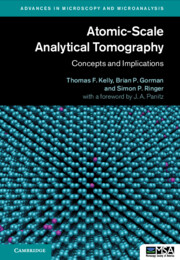Book contents
- Atomic-Scale Analytical Tomography
- Advances in Microscopy and Microanalysis
- Atomic-Scale Analytical Tomography
- Copyright page
- Dedication
- Contents
- Foreword
- Atomic-Scale Analytical Tomography (ASAT)
- Preface
- Acknowledgments
- Introductory Section
- 1 The Need for ASAT
- 2 History of Atomic-Scale Microscopy
- 3 Development of ASAT as a Concept
- Core Section
- Implications Section
- Index
- References
2 - History of Atomic-Scale Microscopy
from Introductory Section
Published online by Cambridge University Press: 03 March 2022
- Atomic-Scale Analytical Tomography
- Advances in Microscopy and Microanalysis
- Atomic-Scale Analytical Tomography
- Copyright page
- Dedication
- Contents
- Foreword
- Atomic-Scale Analytical Tomography (ASAT)
- Preface
- Acknowledgments
- Introductory Section
- 1 The Need for ASAT
- 2 History of Atomic-Scale Microscopy
- 3 Development of ASAT as a Concept
- Core Section
- Implications Section
- Index
- References
Summary
A complete, albeit brief review of the history of atoms and atomic-scale microscopy is offered. From the concept of the atom developed by Greek philosophers to the ultimate microscopy, the path of development is examined. Atomic-Scale Analytical Tomography (ASAT) is cited as the ultimate microscopy in the sense that the objects, atoms, are the smallest building blocks of nature. The concept of atoms developed as the scientific method grew in application and sophistication beginning in the Middle Ages. The first images of atoms were finally obtained in the mid-twentieth century. Early field ion microscopy evolved eventually into three-dimensional atom probe tomography. The crucial role of the electron microscope in atomic-scale microscopy is examined. Recently, combining atom probe tomography and electron microscopy has emerged as a path toward ASAT. The chapter concludes with the point that ASAT can be expected in the next decade.
Keywords
- Type
- Chapter
- Information
- Atomic-Scale Analytical TomographyConcepts and Implications, pp. 11 - 39Publisher: Cambridge University PressPrint publication year: 2022



